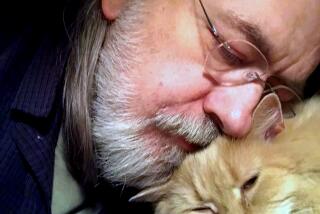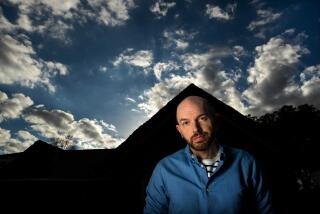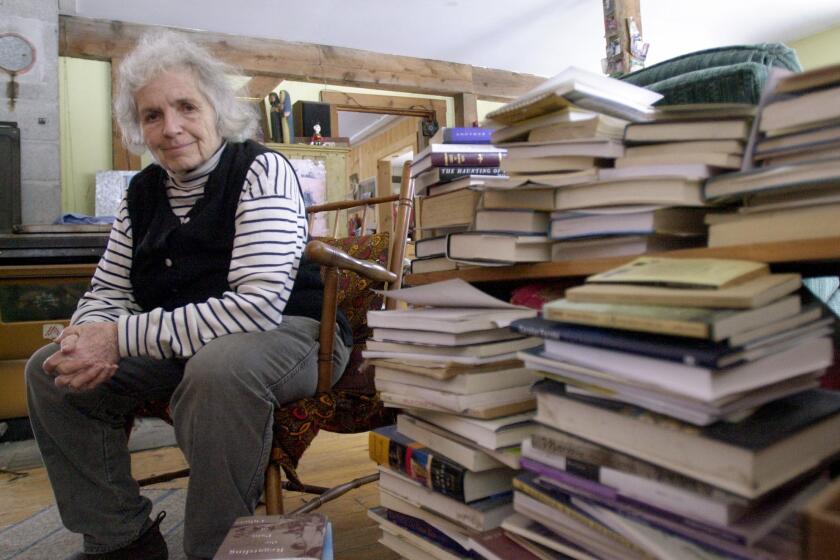Tracking the Truth of the Urban Legend : Folklore: An expert who collects folk stories finds that some of the tales have a life of their own.
He’s a moderately successful author slouched in a moderately comfortable chair in an immoderately expensive downtown hotel lobby, his latest book cradled on his chest like a small pet.
He’s a folklorist, someone who studies stories with the moderately confusing name of urban legends. He’s been moderately entertaining as a guest on TV’s “Late Night with David Letterman” no less than five times--the last time out he actually corrected Letterman on the air. Still, he has been asked back.
You might figure this guy can tell some kind of story.
Figure again. See, it’s all data to Jan Harold Brunvand, perhaps the nation’s foremost purveyor of urban legend lore. He admits he has gotten better at story telling since he started to promote his first book, “The Vanishing Hitchhiker,” in 1981. Still, he can’t speak in broad, sweeping terms about the stories he studies. When he does speak, he takes pains to be precise. He didn’t hear something from a few clergy, but two. His newspaper column does not appear in a bunch of newspapers, but 16. He says 16 carefully, so no one can think he said 60.
You have to be careful with urban legends. They are so unpredictable. Why, just a few years back, one particular urban legend was the hottest legend going. After a rest, it’s back, hotter than ever, and Brunvand is hard pressed to explain exactly why.
Here’s the story: A well-known figure (initially, it was baseball superstar Reggie Jackson, but more recent incarnations have the figure being basketball superstar Isiah Thomas or actor Eddie Murphy) enters the elevator of an expensive hotel in, pick one, New York, Detroit or Las Vegas.
Reggie-Isiah-Eddie is in the company of a large dog. Already in the elevator are three elderly ladies visiting the city. The Reggie-Isiah-Eddie character commands his dog, Lady, to sit, and the three elderly ladies comply, believing the command was directed at them, not the dog. In most versions of the elevator story, the women assume the man with the dog is about to rob them.
Reggie-Isiah-Eddie realizes what has happened and apologizes at length to the three ladies, who eventually recognize the person with the dog. Some versions of the story have the Reggie-Isiah-Eddie character buying the three lunch and or dinner.
“I’m surprised this elevator story is still so big,” Brunvand said, taking a break from the 100th annual convention of the American Folklore Society held here.
On a recent, two-week tour across the United States promoting his new book: “Curses, Broiled Again,” (W.W. Norton; $17.98; 335 pp.), Brunvand said he heard a recently minted version of the elevator story in virtually every city he visited.
Folklorists call these stories urban legends, although legend is an adequate enough title for them, Brunvand says. Typically, they are folk stories, meaning they are told rather than read, moving from person to person. Usually, they have some local or time references.
Urban legends are also told as if true, even if there is no evidence to suggest that they are. Reggie Jackson, for one, has said he would never keep a dog in New York City, but despite Jackson’s protestations, the story continues to be told.
And, they are usually told by a person who has some relationship to the person or persons in the story. These people are friends of a friend ( FOAF in folklore jargon) who was involved in the tale in question.
Typically, these FOAFs are indirectly related to the teller. It isn’t the storyteller’s mother or father, for instance, but a friend of the storyteller’s second cousin.
The FOAF connection helps to authenticate the stories, but at the same time, FOAFs also serve as a foil, deflecting attempts at following a story back to the source.
One of the most well-known urban legends is called “The Death Car” story. A person reads a classified advertisement in a local newspaper and sees a very expensive car being offered for sale at a very inexpensive price. The person calls the telephone number in the ad and sets up an appointment to see it.
When the person does see the car, he realizes why the car is being offered for such a low price: the previous owner committed suicide in the car but the body was not discovered for some time. The car’s interior has a horrible smell that cannot be removed, thus explaining the low price.
Tanning beds were at the center of a formerly hot urban legend, which peaked in 1987 and 1988. The title of his latest book is a reference to the legend.
Details of the story vary, as those in urban legends tend to do, but the result is usually the same: a woman who wants a quick tan schedules extra sessions at the local tanning salon. She later discovers that her internal organs have been literally cooked.
Brunvand gets most of his materials for his books or his twice-weekly newspaper column from people who mail him stories. He added his address at the back of his first book, “The Vanishing Hitchhiker,” as an afterthought and he has been inundated with stories ever since.
“I have to say most of my study has been trying to frantically keep up with the mass of stories” he receives. “Sometimes, I’m faulted by folklorists for not doing enough analysis or interpretation. I don’t always think of these things, I’ll confess that, but I have really been overwhelmed by the amount of material.”
Besides the network of people who send Brunvand clippings and provide tales, he also gets information from a daily reading of Dear Abby, Ann Landers and Mike Royko. A colleague sends him copies of Herb Caen, columnist for The San Francisco Chronicle.
He’s even contemplated getting two subscriptions to every supermarket tabloid (two, incidently, so he can clip articles from both sides of the page), but Brunvand says that’s quite a bit of trash to wade through to get to the gems.
Have an urban legend? Write: Jan Harold Brunvand, Department of English, University of Utah, Salt Lake City, Utah 84112.
More to Read
Sign up for our Book Club newsletter
Get the latest news, events and more from the Los Angeles Times Book Club, and help us get L.A. reading and talking.
You may occasionally receive promotional content from the Los Angeles Times.






